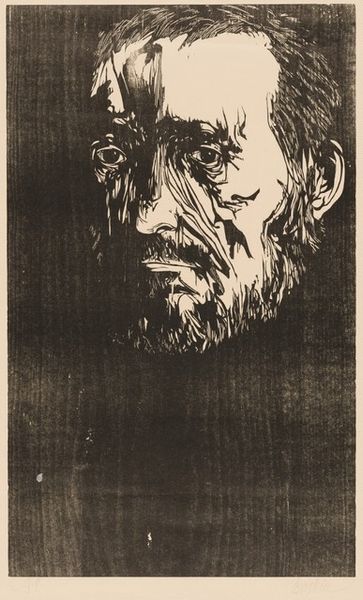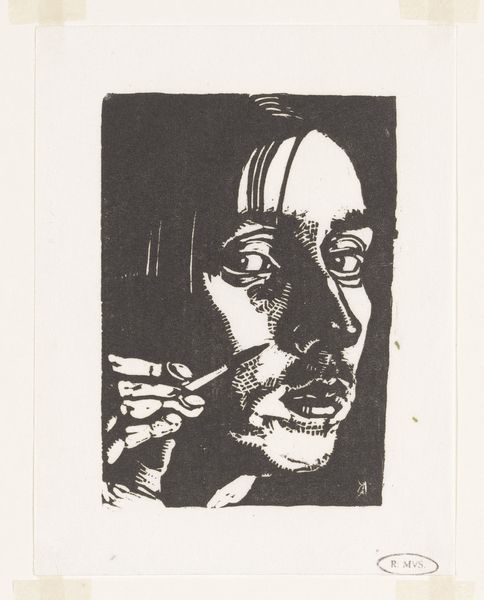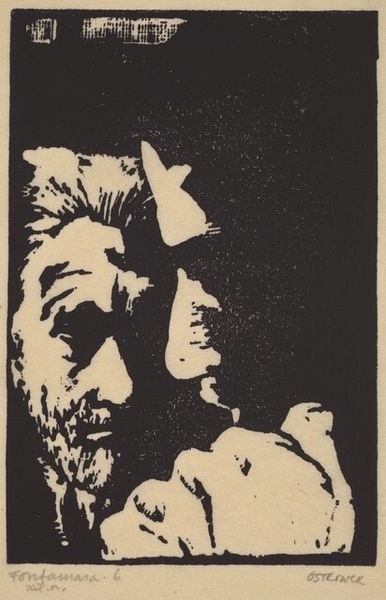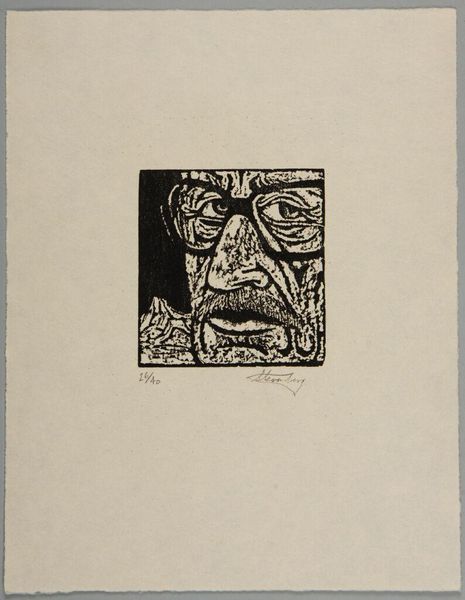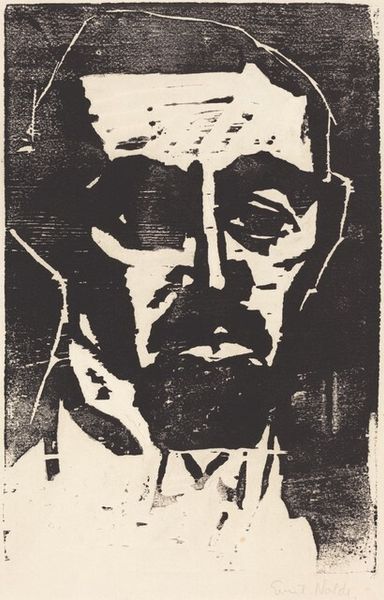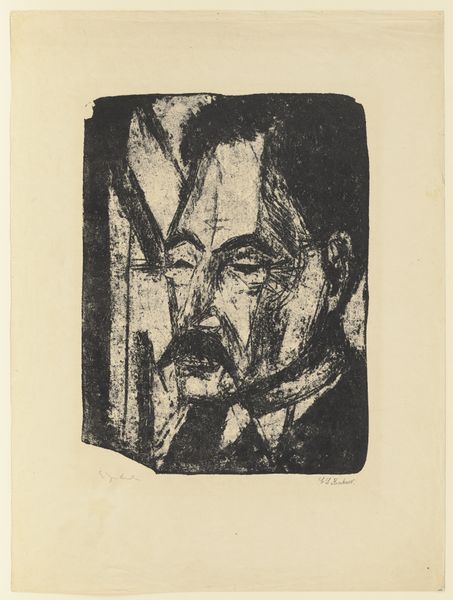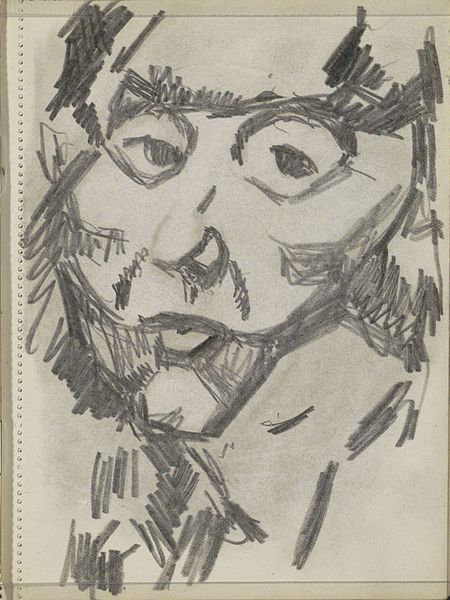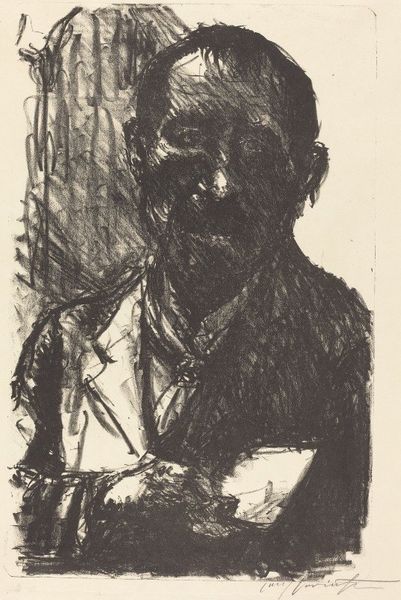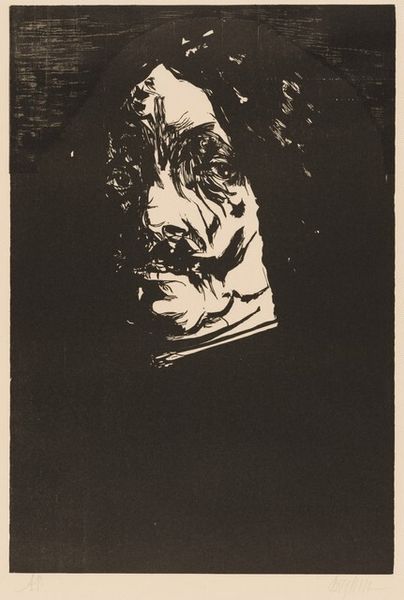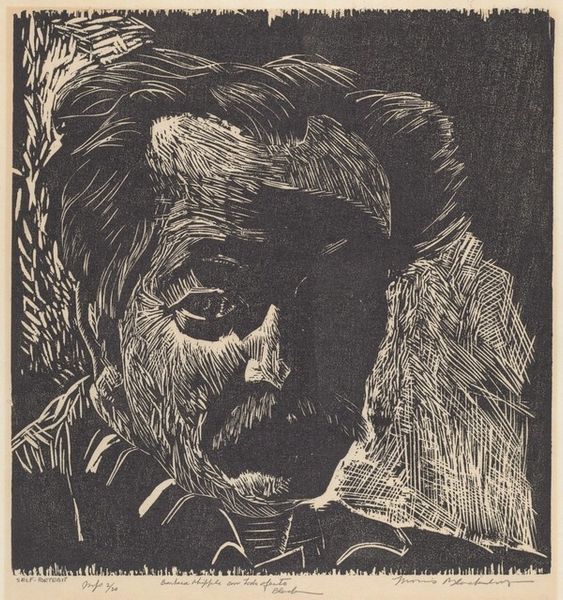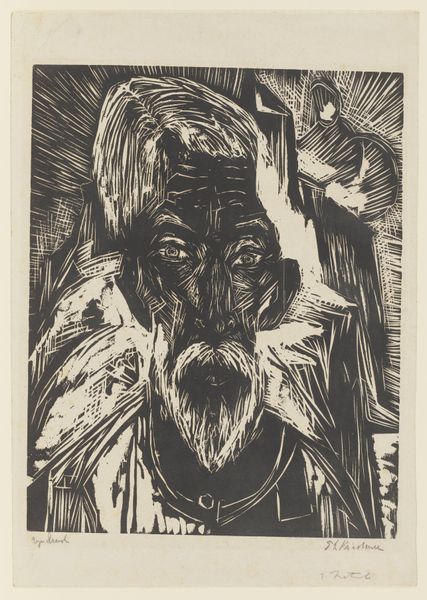
print, woodcut
#
portrait
# print
#
expressionism
#
woodcut
Copyright: National Gallery of Art: CC0 1.0
Curator: Let's discuss Emil Nolde's woodcut from 1906, titled "Italian (Italiener)." It's a striking example of his early Expressionist style. What are your first impressions? Editor: The stark contrast of black and white immediately creates a mood of intensity, almost a kind of raw visual tension. The portrait has an unfinished quality, due to the coarse lines. Curator: The roughness is intrinsic to the woodcut medium. Nolde was part of a movement that embraced non-traditional printmaking. By choosing the woodcut, and arguably exploiting its technical challenges, he rejects academic traditions that valued illusionism. He instead puts labor, and materiality front and center. Editor: Precisely! That contrast between the material process and the emotional expressiveness. Observe the heavy lines that delineate the subject's face, especially around the eyes and mouth. Those deep gouges convey a weight of experience, sadness, maybe even a touch of weariness. Curator: Woodcuts are more than technique for Nolde: they reflect an ethos. Consider the historical context: early 20th-century Germany experiencing rapid industrialization and social change. Artists like Nolde turned to woodcuts, a 'primitive' medium, to express alienation and disconnect from modernity, and the inherent struggles that followed. Editor: It really feels like he's using the very process of cutting into the wood to carve out not just a face, but a character—deeply felt and profoundly human. The limited tonal range amplifies this, reducing the man to his core. The white lines could stand for some degree of humanity or good standing out against a black existence, while he seemingly melts into the dark corners. Curator: Yes, Nolde also used woodcuts to democratize art. Prints are easily produced, less expensive to the consumer, thus helping to cultivate art and make it accessible to the masses and to the working class. Editor: This one work seems so laden with cultural significance that helps reflect how much impact Nolde made as an expressionist. It's more than an "Italian"—it's a universal archetype expressed through the constraints and capabilities of the woodcut. Curator: It's amazing how Nolde elevates both subject and medium through the careful intersection of process, material, and context. Editor: Agreed! This work reminds us of how the best art harnesses constraints to amplify expression.
Comments
No comments
Be the first to comment and join the conversation on the ultimate creative platform.
